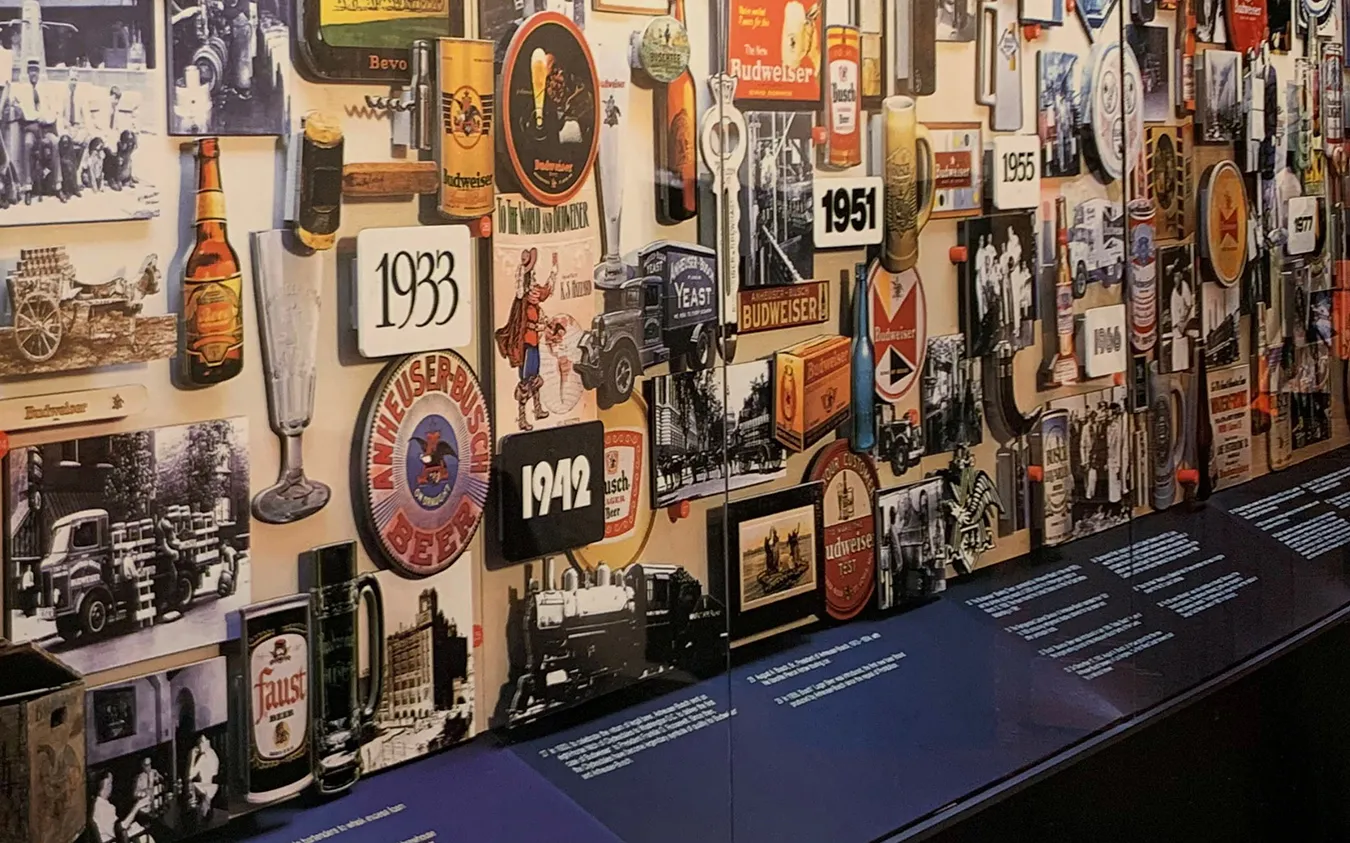
We have been bringing our passion for branding and marketing communications to the St. Louis region for more than 70 years. As the longest-running creative agency in St. Louis, OBATA has had the pleasure of partnering with some of the most iconic brands around the nation since 1948.
OBATA is aging like a fine red wine. We have rich perspectives, and we only get better with time…
1940s
Not your typical “Mad Men”.
OBATA’s business and creative roots stem from the drive and ambition of an artistic young woman and a multi-talented Japanese-American man.
In late 1945 co-founder Alice Hausner, a 25-year-old illustrator for Garrison-Wagner, decides to strike out on her own and opens her studio in downtown St. Louis as a freelance artist. Co-founder Kimio Obata and his family had spent over a year in a Japanese internment camp during World War II. By 1944, he and both his parents are working as artists for Garrison-Wagner.
Within a few months of her startup studio, Alice Hausner’s freelance business has more work than she can handle alone, so Kimio Obata joins her, bringing contacts and advertising projects from Gardner Advertising.
By 1949, with their growing business booming, Kimio Obata and Alice Hausner relocate to a paddlewheel boat moored “at the foot of Pine Street”, sharing offices with the Cassell, Watkins, Stevens advertising art firm. Rich Haley, also working on the boat, soon joins OBATA. The location on the Mississippi was scenic, but isolated. Throughout the ‘40s and ‘50s, the adjacent riverfront was a 39-block wasteland awaiting future Arch construction.
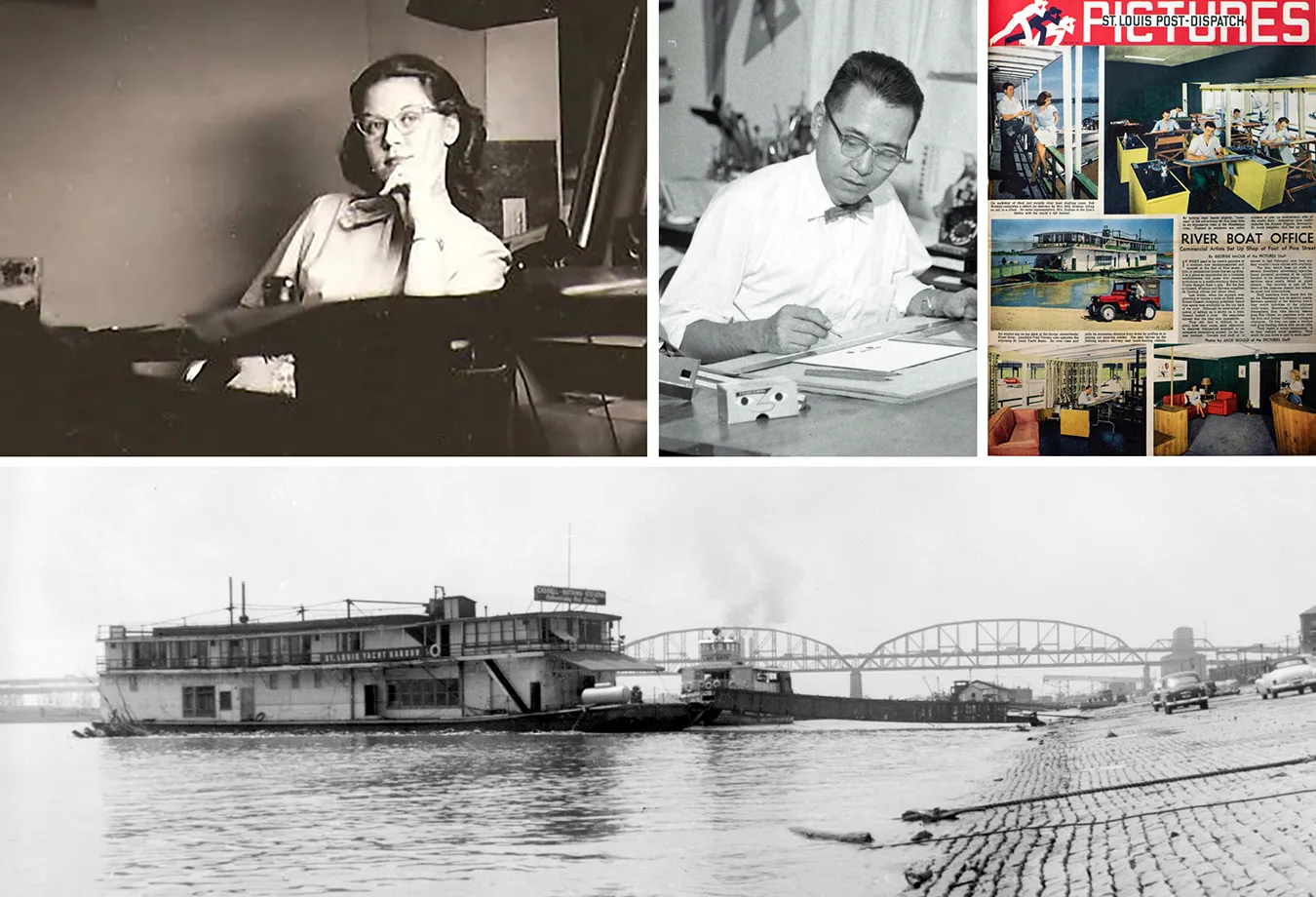
1950s
A company built to last.
By 1952, after three years afloat, OBATA relocates back to dry land in the modernist Roosevelt Federal Savings building. Kimio’s younger brother Gyo opens offices of his new architecture firm, Hellmuth, Obata and Kassabaum (HOK), in the same building. When HOK relocates to the Delaney building in 1956, the growing offices of OBATA soon follow.
OBATA gains a reputation as an art studio known for its illustration, advertising art, and architectural renderings. In early 1955, Kim Obata creates watercolor renderings of the planned new terminal at Lambert Airport for the Post-Dispatch. In addition to ongoing creative work with Gardner Advertising throughout the decade, OBATA clients include Ralston-Purina and Anheuser-Busch. In 1955, Alice Hausner paints the original mountain scene for Busch Bavarian beer.
In 1959, industrial designer and future company president Russell Hughes joins the company from Emerson Electric, strengthening a client partnership that continues to this day. OBATA adds industrial design expertise to its service offerings and includes work for Emerson’s Builder Products group, including work on the company’s new Craftsman radial arm saw, an innovative product that cements Emerson’s partnership with Sears.
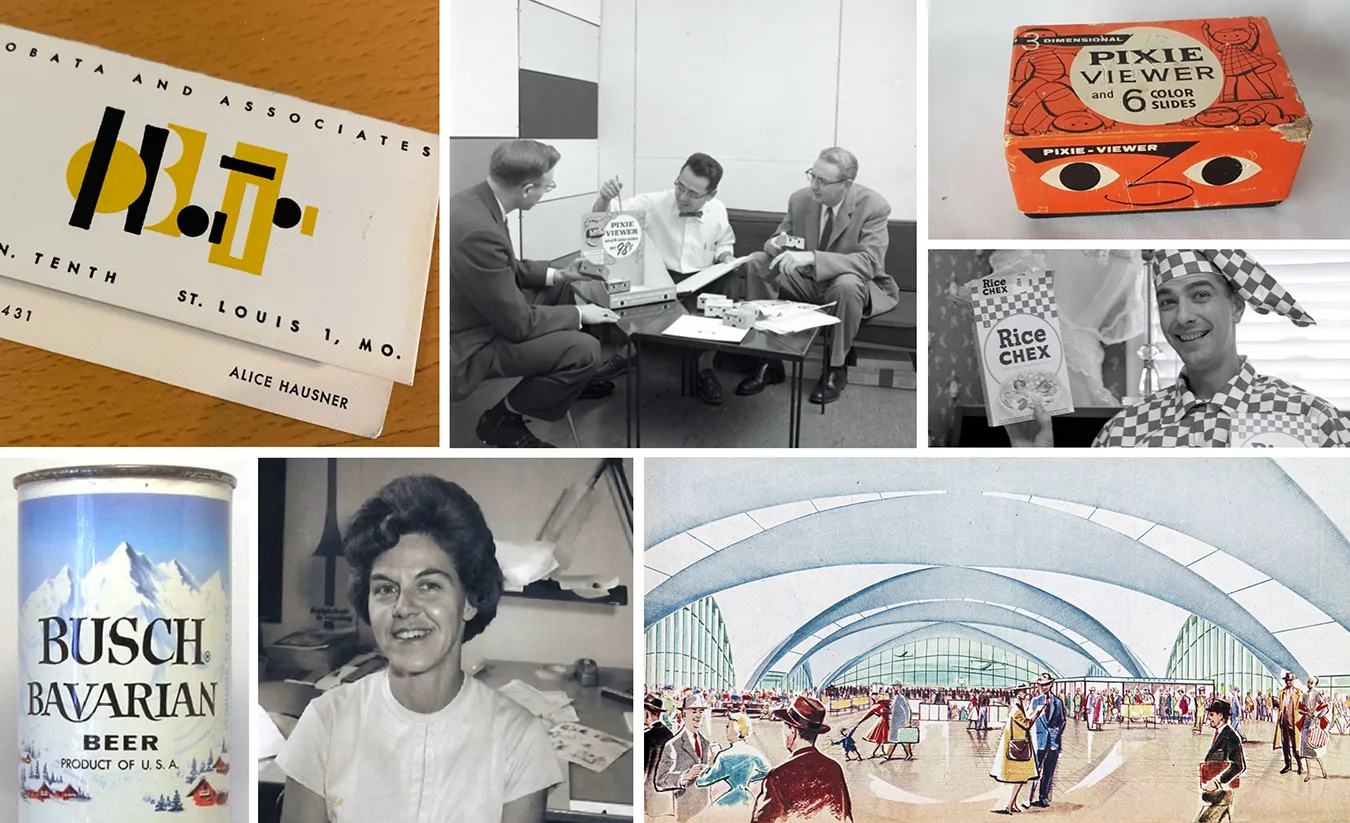
1960s
Merging art and business on a global stage.
In 1960 the company moves to 1127 Pine street, a location listed as the “Design Center Building” in local directories. Businesses include Obata Studios, Obata Import-Export Co and Watkins-Obata Photography. Obata Studio’s close relationship with Gardner Advertising continues throughout the 1960s with Pet Milk as a major account.
Alice Hausner maintains a long-term relationship with Concordia Publishing, providing stylish watercolor illustrations for an ongoing series of religious children’s books. Corporate communications and branding work grows, including the design of Monsanto’s iconic “M” logo and a new corporate brand identity program for Emerson.
OBATA’s work with Emerson expands to include the design of the “Living Effects Laboratory”, a full-size mid-century modern home on Emerson’s campus for testing and development of residential products. In 1964, as Emerson looks to expand their business in Asia, the company turns to Kim Obata as a consultant for Emerson’s first international joint venture, Aichi Emerson.
In 1966, Kim Obata moves to Japan and establishes the Obata Corporation in Tokyo. The two OBATA locations share the Emerson account, with several of OBATA’s St. Louis-based employees spending six months to a year working in Tokyo.
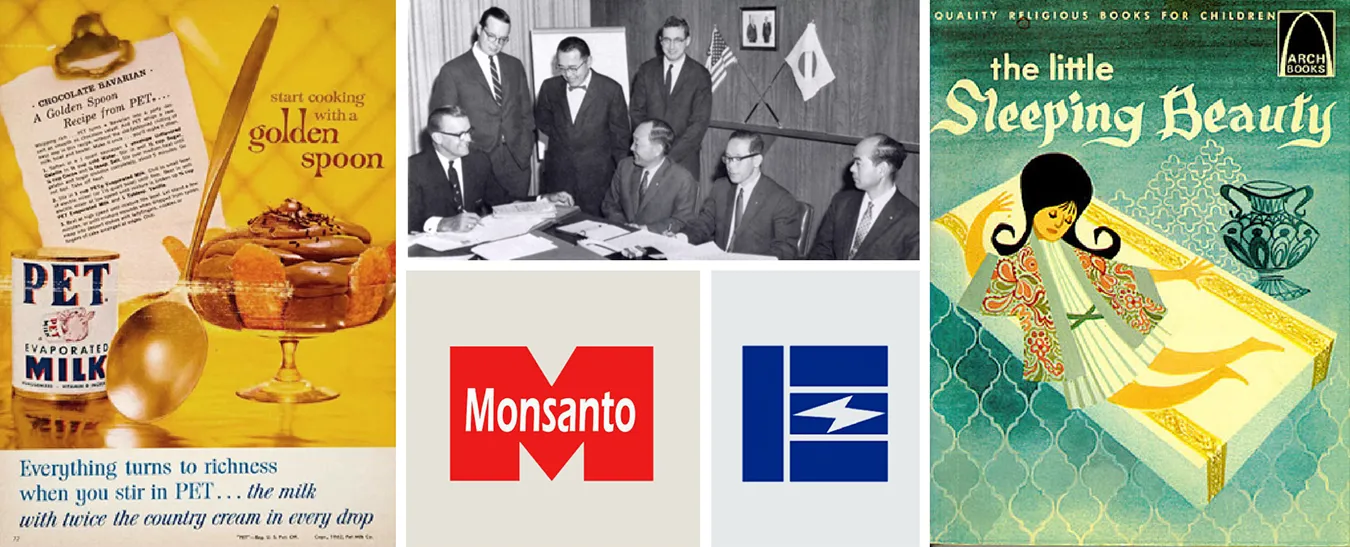
1970s
Beyond advertising.
In 1970, OBATA hires graphic designer John Vandover to support and expand the company’s growing corporate and branding communications business. He eventually succeeds Russell Hughes as president of OBATA.
OBATA’s early business had been based on supporting advertising agencies in St. Louis but is increasingly moving towards working directly with top corporate accounts to design and produce exhibits, presentations, and annual reports.
With corporate environmental displays and award-winning multi-media presentations for Emerson and Anheuser-Busch, the company is rapidly moving beyond its early creative roots. OBATA’s creative work even appears at Disney World, as the company creates a multi-media, nine-projector slide and film pre-show presentation in the Circle-Vision 360 Theater for corporate sponsor Monsanto.
Consumer packaging design remains a strength as OBATA continues a three-decade partnership with Ralston-Purina, creating package design for the entire Chex brand family of cereals.
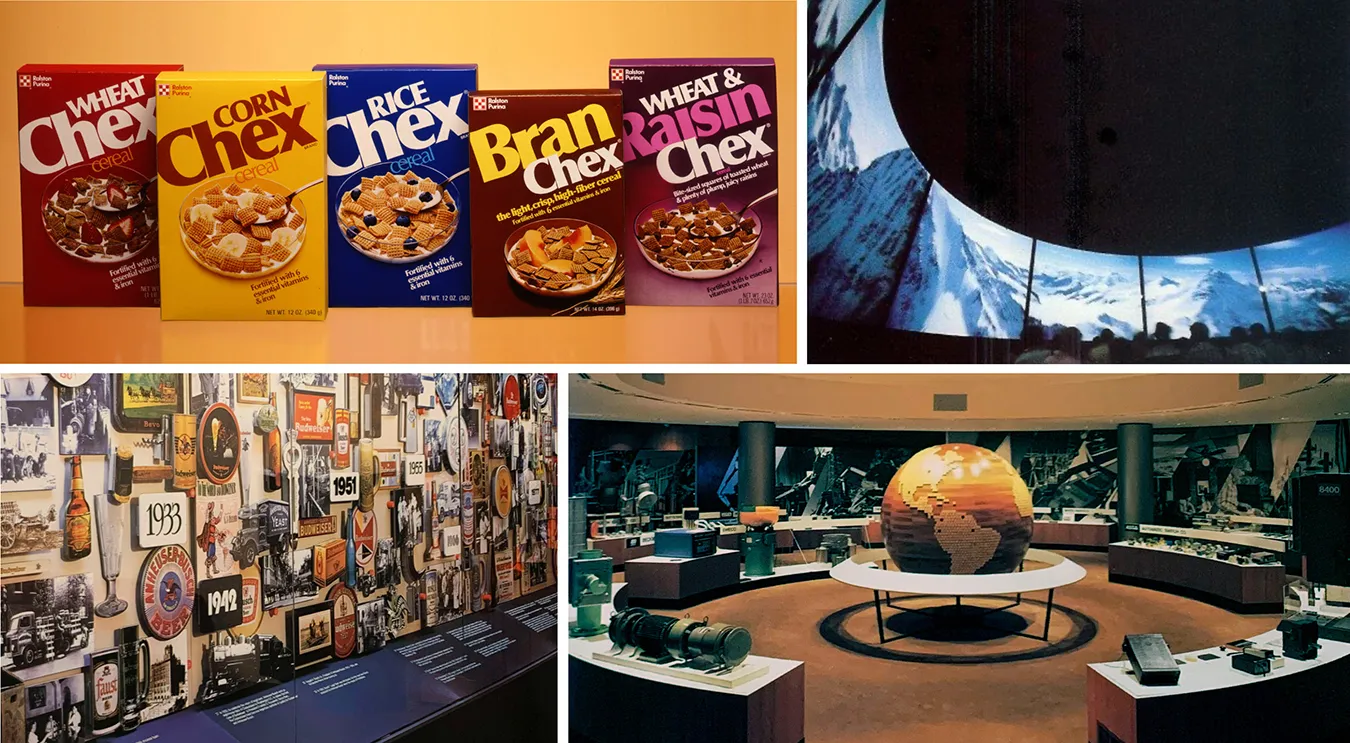
1980s
A move and a Mac.
In 1982, OBATA moves south to the Soulard area, restoring and remodeling a 100-year-old former church into a modern office space and in the process moving closer to a major client, Anheuser-Busch.
In late 1984 OBATA enters the computer age with the purchase of an Apple Macintosh computer, the first St. Louis design firm to make the leap to digital.
The company’s focus on annual reports grows steadily throughout the decade, designing annual reports with original photography shot by OBATA photographers for Emerson, Mercantile Bank, Interco, A.G. Edwards, Jefferson Smurfit, and Union Electric. Obata’s creative reputation grows as a St. Louis regional annual report design firm.
OBATA continues nearly four decades of graphic design and branding, developing original bottles, labels and packaging for Anheuser-Busch beverages. In 1986, Obata creates the original sculpted version of Bud Light mascot, Spuds MacKenzie.
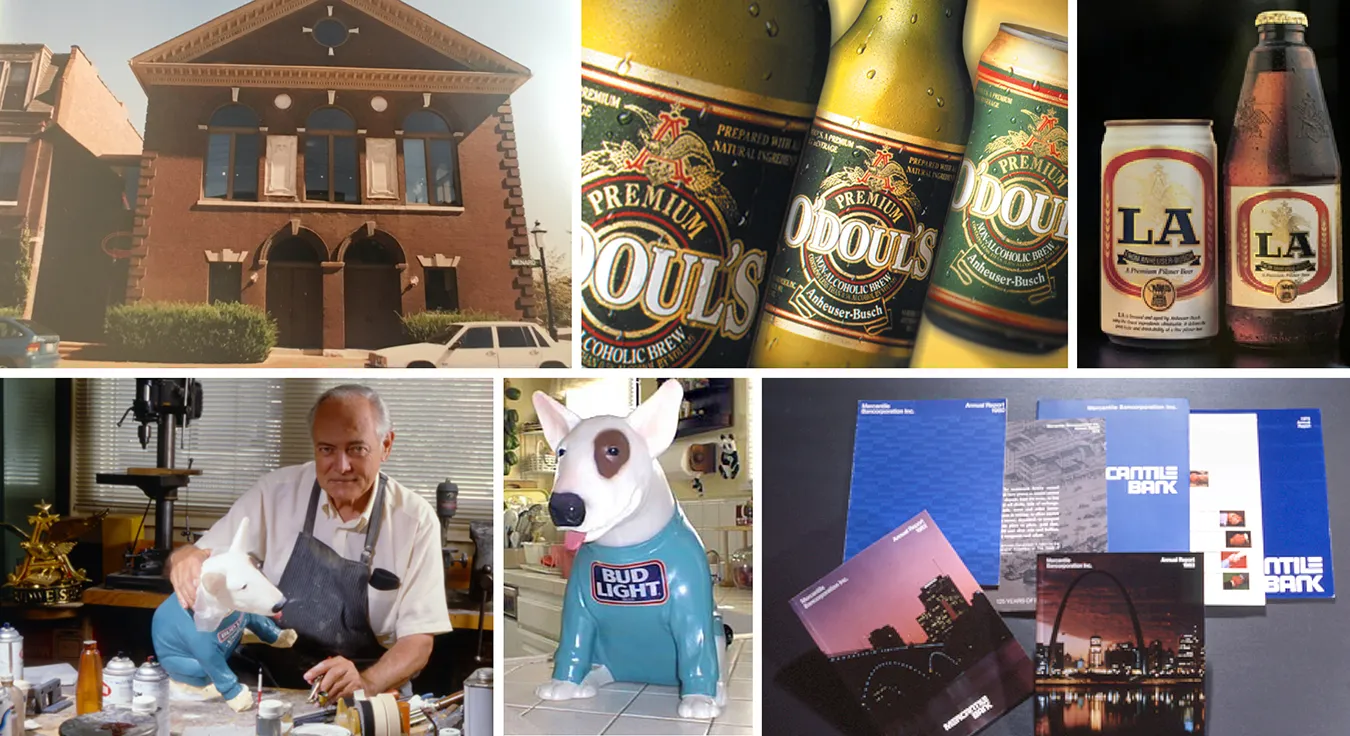
1990s
A “can-do” attitude.
OBATA’s focus on deploying leading-edge technology and expanding in-house services is evident in the company’s early entry into website design and programming, photo retouching and video production.
In 1996, OBATA designed and built its first internal website. Soon followed by other web design and development projects for forward-looking regional clients.
In addition to ongoing beverage marketing communications, OBATA designs an ever-expanding packaging line of Eagle Snacks and Cape Cod brands for Anheuser-Busch.
In 1996, OBATA begins corporate communications design work with the Peabody Group. Initial creative work began with location and executive photography assignments and the design of their employee magazine.
Our creative work soon expands to include design and production of their annual reports, PowerPoint presentations, branding, employee communications, and photography and video assignments.
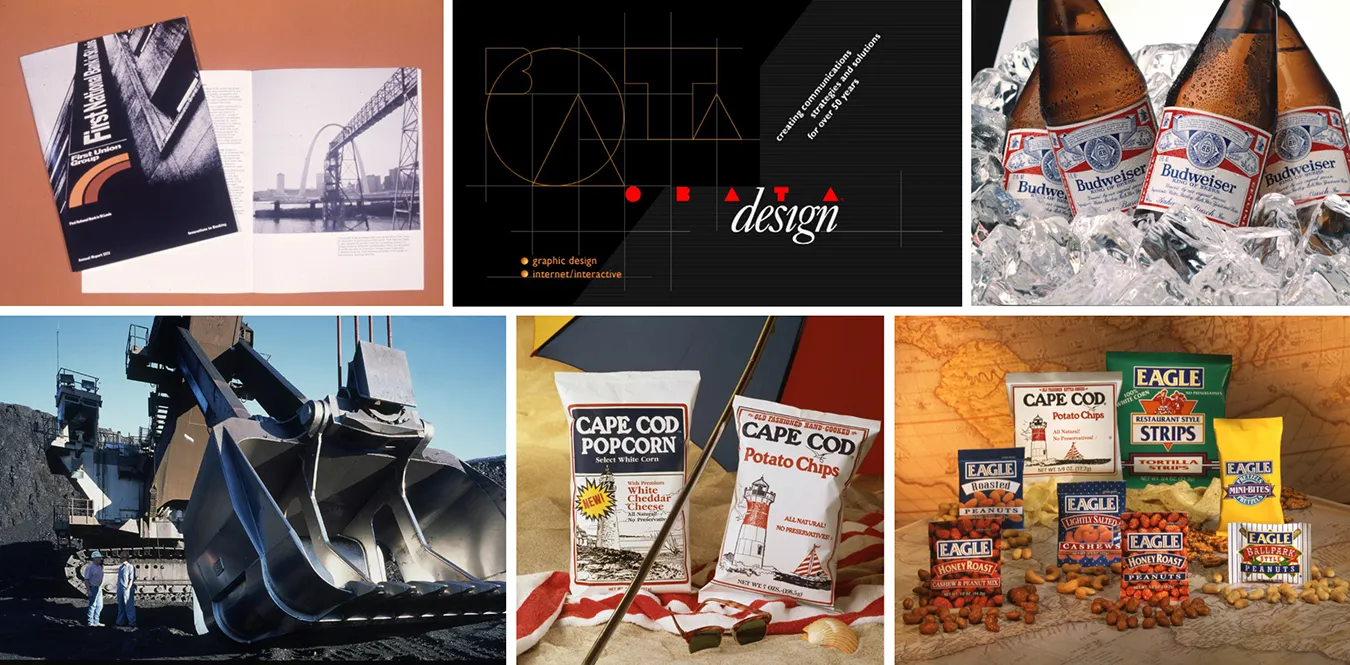
2000s
We didn’t start the fire…
In the summer of 2000, OBATA suffers its second major fire in company history. Most paper files (and one goldfish) are lost, but all computers and digital files are saved. Though the building is uninhabitable for nine months, the company is back serving clients from temporary locations within three days.
Later that same year OBATA develops and deploys its first custom content management system (CMS) for Emerson’s intranet. Our long partnership with Emerson includes product design, interior design, exhibit design, events, brand development, video production, photography and over 50 years of annual report design.
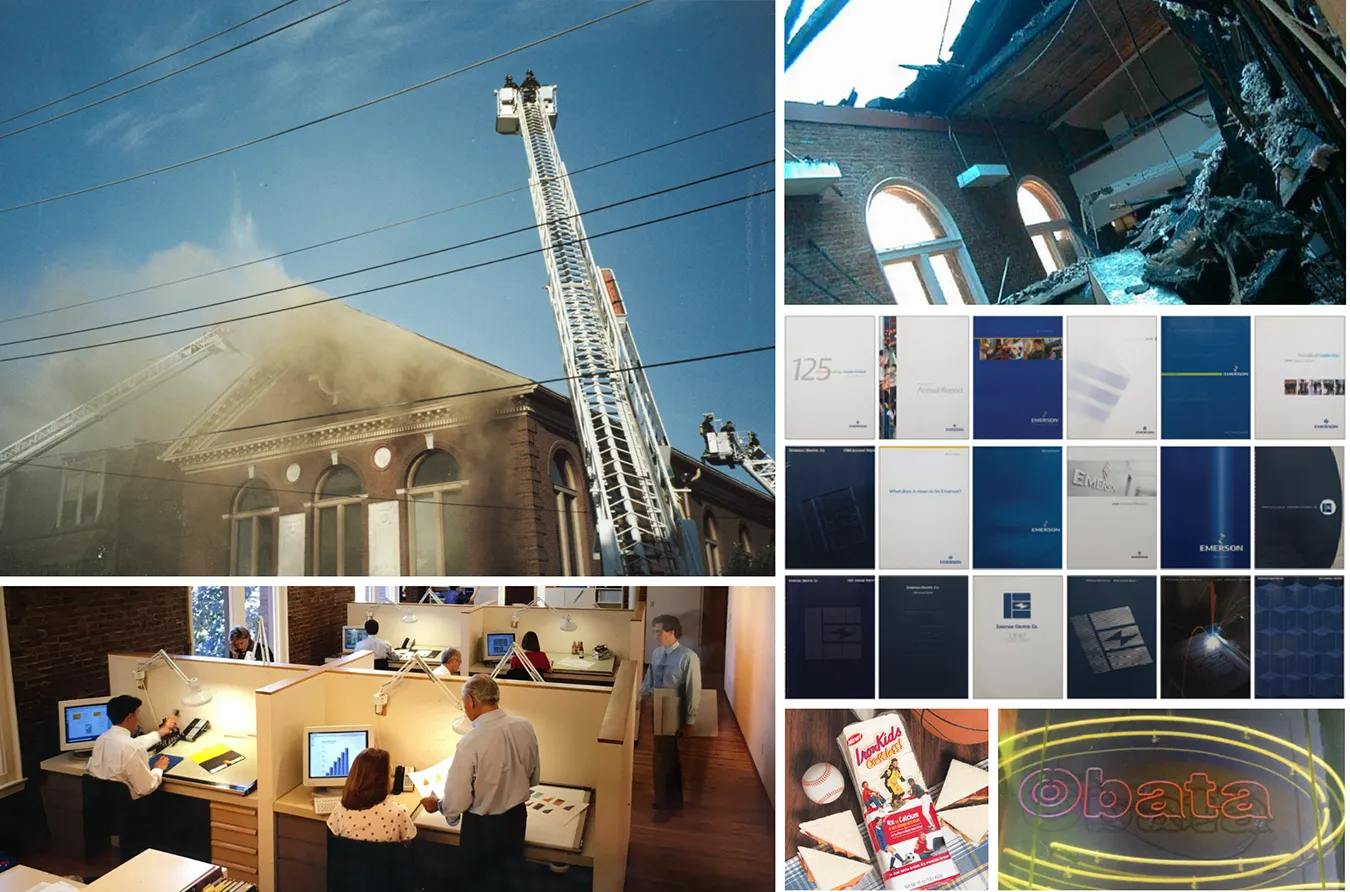
TODAY
Simplifying complex communication challenges.
OBATA helps clients execute branding, marketing and corporate communication initiatives across numerous industries, including healthcare, technology, industrial, energy, finance, agriculture, utilities, and beyond. OBATA’s expertise lies in simplifying complex communication challenges to maximize understanding and inspire audience-driven action.